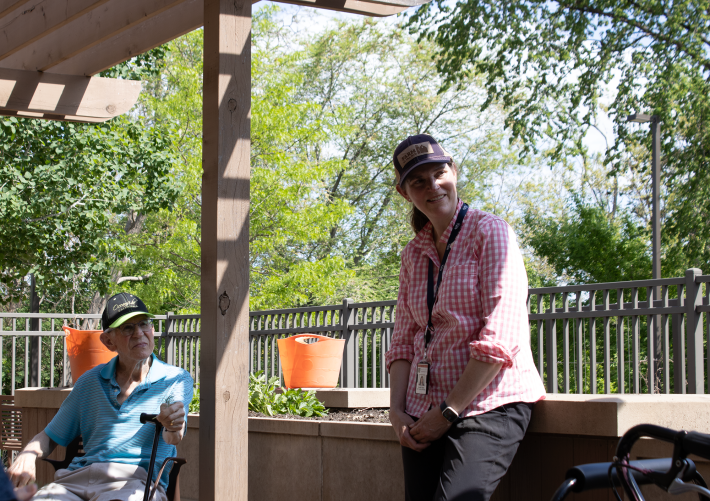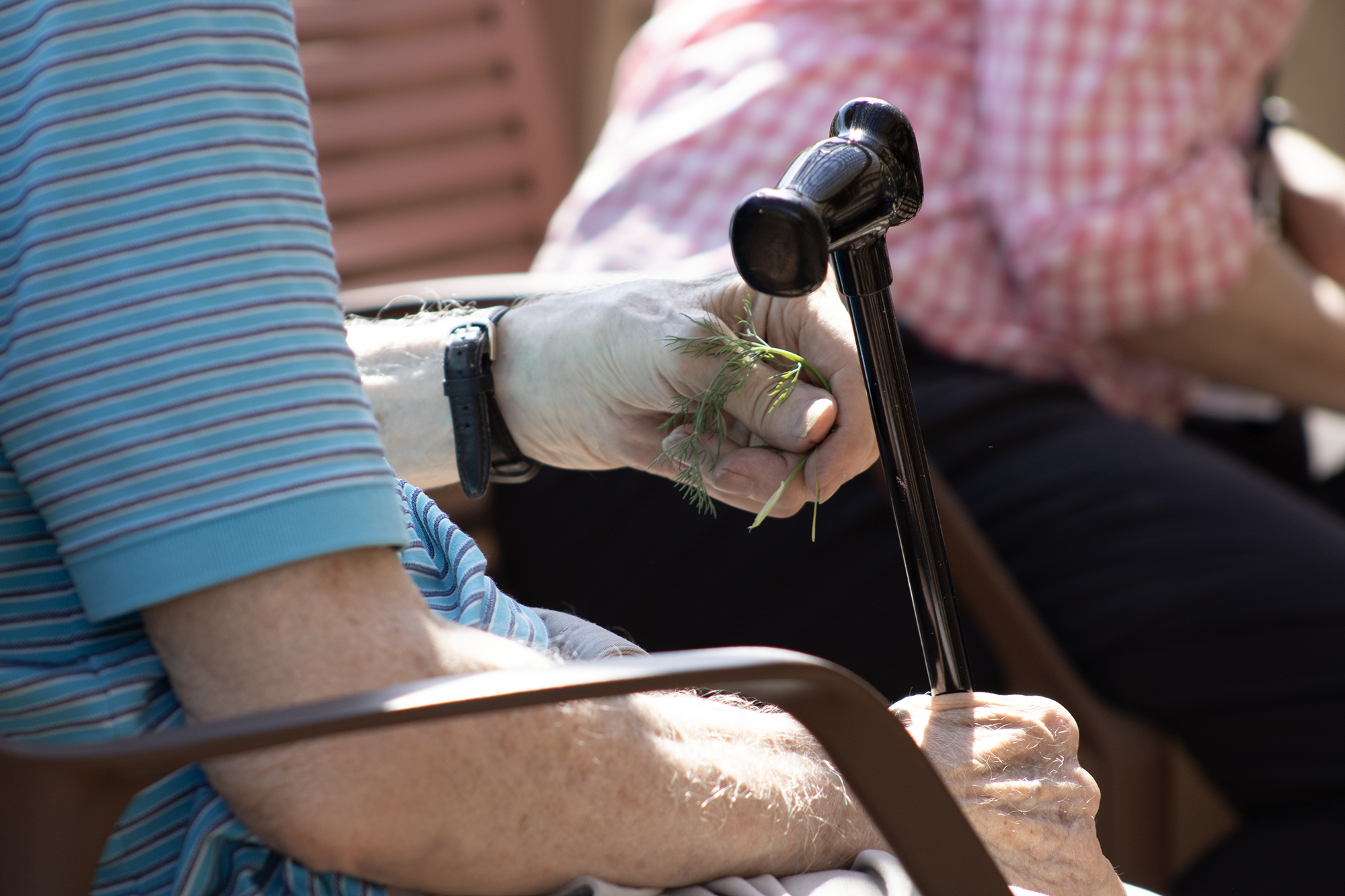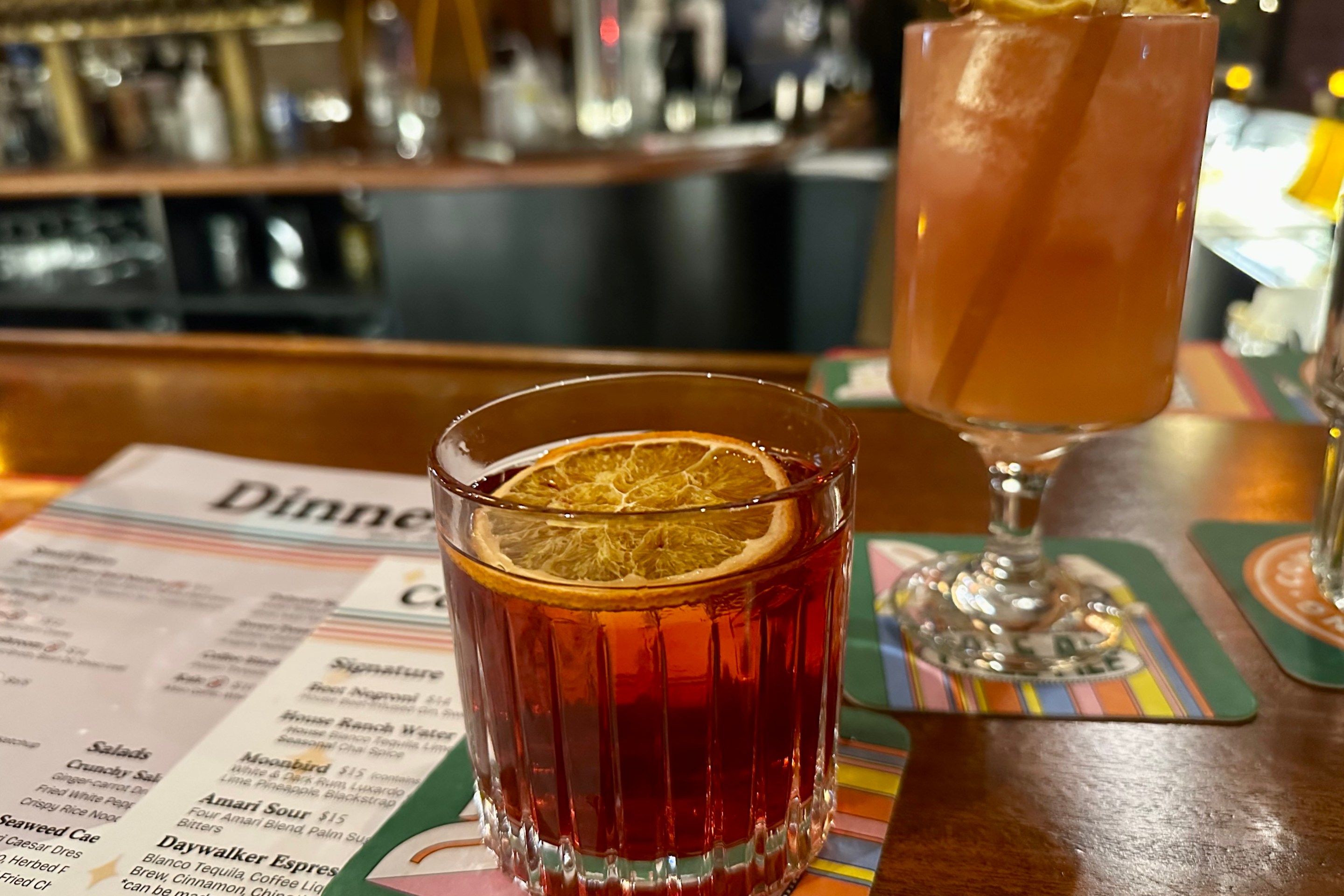Racket collaborated with the Bethel University Arts + Culture Reporting class to produce the stories you'll read this week. Our editors worked with students, mostly juniors and seniors, to develop ideas, source stories, and edit them for the enjoyment of readers. Feel free to seek out these young journalists, photojournalists, and graphic designers to fill your internships and jobs. They like to get paid for their work, and thanks to Racket members and a grant from Bethel, they got cashed out for these pieces. Enjoy!
On an outdoor deck in Golden Valley, five Parkinson’s patients sit in a circle holding bunches of dill. They discuss the changing seasons, the birds, the vegetables they’ve been eating at home. It might not seem revolutionary, but here at Struthers Parkinson’s Center, these outdoor sessions are a unique part of patient care.
“Depression and anxiety rates are very high in Parkinson's,” says manager Joan Hlas. “Giving people productive activities and things that they can engage in [helps them] feel like, ‘Hey, I can still do this and/or learn new [things].’’
Struthers Parkinson’s Center serves patients at a variety of stages of the disease. But in addition to standard treatments—physical therapy, speech therapy—Struthers uses a holistic approach. (Parkinson’s disease occurs when neurons in the brain start to die, leading to effects on the nervous system.)

Once a week, a group of five to 10 patients comes to the center to participate in the Struthers activity program. Their time is split into three parts: music, exercise, and nature. Participants complete sensory tasks to help improve their fine motor skills. During the winter months the center brings in animals like dogs and bunnies so that patients are able to engage with sensory activities like petting the animals, while during summer months they’re able to plant flowers, tomatoes, and pepper seeds, and to feel flower petals.
On this May afternoon, Sarah Palm, a programming lead at the University of Minnesota’s Nature-Based Therapeutic Services, demonstrates how to plant dill as an activity for the patients. She pours dirt into plastic planters, going through each step slowly with the group. One patient asks Palm if he can take off his gloves.
“I like the feeling of the dirt,” he says.
She agrees, so long as he takes responsibility for any risks and washes his hands afterward. It’s activities like these that help reduce the patients’ anxiety and depression.
“It’s amazing how very anxious people can be quite calmed down by giving them a little rake, and they get to just hoe and weed the garden,” Hlas says.
Rachel Voit loves teaching kids how to canoe. It’s wobbly and uncomfortable at first, but after they figure it out, they just want to go again, she says. And so, after she finished her therapy fellowship at the Yale Child Study Center in Connecticut, Voit came back to Minnesota and searched for a job that could combine her passion of the outdoors with therapy.
That’s how she found Minneapolis Nature Based Therapy. The therapy practice meets in Minneapolis parks near Lake Nokomis and Lake Hiawatha and in St. Paul locations, including Como Park, all year round. It’s not a classic clinic with a couch and dim lighting, with fidgets sitting on coffee tables. Outdoors, patients can process their thoughts by taking walks, sitting under an oak tree, or laying on the ground staring up at the blue sky.
“Therapy in the outdoors is therapy,” Voit says. “There’s often a lot of walking and talking, so having a talk therapy session while also walking, there's intentional observation and connection with nature.”
As people spend more time indoors, staring at devices, it’s more important than ever for people to go outside and take intentional time away from screens for their mental wellbeing. One 2017 National Library of Medicine study found that those who spend significant amounts of time on screens are more likely to develop depression—but the benefits of time spent outside are numerous, studies show.
“Because nature engages all of our senses, it’s more holistic and reinvigorating,” Voit says. “Rather than when we are looking at a screen, we’re just using one or two senses which is depleting.”
When Voit started at MNBT, she was thrilled that the center tied together outdoor experiences and training. She says that this excitement has not died down in her 18 months with the clinic, which was founded in 2020.
“I learn from everyone I work with, every single day they teach me about strength,” she says. “They teach me about grief. They teach me about resilience. They’re teaching me things all the time.”
Greta Wilson is a sophomore organizational communications major with journalism and business minors at Bethel University. She loves puzzling, her first car, a 2003 bright copper colored Nissan Pathfinder, and watching bad TV shows with her friends. She wants to have a job that will help others.







